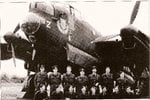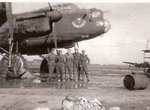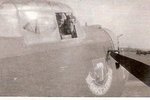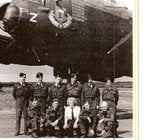All,
I'm having trouble establishing accurate tailfin markings for Lancaster HW-Z (ED 905) Grog's the Shot. One internet site shows double yellow stripes on the tailfin yet the latest Revell 1/72 kit release shows all-yellow tailfins. See attachments!


Can anyone tell me which markings are correct (if not both by time period)?
Thanks much for any help you can provide.
Geoff H.
I'm having trouble establishing accurate tailfin markings for Lancaster HW-Z (ED 905) Grog's the Shot. One internet site shows double yellow stripes on the tailfin yet the latest Revell 1/72 kit release shows all-yellow tailfins. See attachments!
Can anyone tell me which markings are correct (if not both by time period)?
Thanks much for any help you can provide.
Geoff H.






